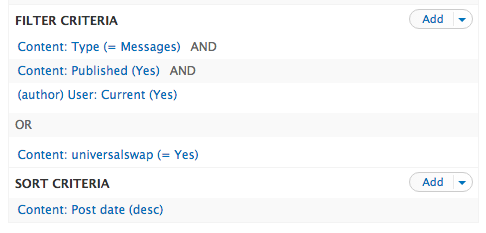I'm trying to filter published content by the values set inside of two fields (one or the other). Right now, I'm successfully filtering my content by one field:
Contextual Filter
If field_targetuser = logged in uid, than display content.
However, I also want to show content in which field_universal = YES , regardless of the logged in uid.
Naturally, implementing the first Contextual Filter and than a second only further filters the intial filter. What I'm trying to accomplish:
Show all content of this type if targetuser matches logged in user id, but ALSO show all content where field_universal = YES, regardless of what appears in the targetuser id.
Views setup:




